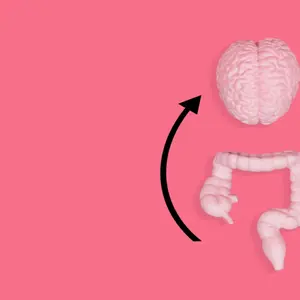

Mental and Behavioral Well-Being

Mental and Behavioral Well-Being
What Is Float Therapy?
One way to manage stress and feeling overwhelmed is the use of water-filled sensory deprivation tanks, where you float in a dark, silent tank apart from external stimuli in order to enter a state of relaxation. What are the benefits of float therapy, and could you benefit from it?
Float therapy is connected with the meditation technique of REST: restricted environmental stimulation therapy. When you enter a sensory deprivation tank, you are detached and disconnected from distractions, noise, and stimuli that can lead to feelings of overwhelm.
The chamber is filled with a shallow pool of water saturated with Epsom salt, which helps you weightlessly float, and the temperature of both the water and the chamber match your skin temperature to help you more seamlessly blend into your surroundings.
Benefits of Float Therapy
Benefits of float therapy in a sensory deprivation tank for 30 minutes to an hour include:
- A mental boost—Researchers found that a one-hour float therapy session substantially reduced anxiety and significantly reduced stress, muscle tension, pain, and depression, while significantly improving mood including serenity, relaxation, happiness, and overall well-being.
- Better sleep—A 2016 study found that float therapy significantly reduced symptoms of generalized anxiety disorder and provided significant benefits for sleep difficulties, difficulties with emotional regulation, and depression. All improved outcome variables were maintained at six months, aside from depression.
- Pain relief—A study of patients suffering from chronic pain (aching muscles in the neck and back area) found that flotation-REST treatment significantly reduced the most severe perceived pain intensity, and also elevated participants’ optimism and reduced anxiety and depression. Patients also fell asleep more easily at night.
Contraindications
Float therapy wouldn’t be recommended for those who have:
- Feelings of claustrophobia
- Open wounds or skin conditions
- An infectious disease
- A seizure disorder
The benefits of float therapy may be worth a try as part of a mindfulness program if you are open to giving it a try.
REFERENCES
Cleveland Clinic. (2022, April 1). Could you benefit from sensory deprivation tank therapy? https://health.clevelandclinic.org/float-therapy-benefits
Feinstein, J., Khalsa, S., et. al. (2018, February 2). Examining the short-term anxiolytic and antidepressant effect of Flotation-REST. National Institutes of Health. National Library of Medicine. National Center for Biotechnology Information. https://pubmed.ncbi.nlm.nih.gov/29394251/
Jonsson, K., Kjellgren, A. (2016, March 25). Promising effects of treatment with flotation-REST (restricted environmental stimulation technique) as an intervention for generalized anxiety disorder (GAD): a randomized controlled pilot trial. National Institutes of Health. National Library of Medicine. National Center for Biotechnology Information. https://pubmed.ncbi.nlm.nih.gov/27016217/
Kjellgren, A., Sundequist, U., et. al. (2001). Effects of flotation-REST on muscle tension pain. National Institutes of Health. National Library of Medicine. National Center for Biotechnology Information. https://pubmed.ncbi.nlm.nih.gov/11854763/


 By
By







